
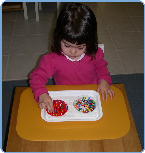
Practical Life Activities include many of the tasks children see as part of the daily routine of their culture, such as carrying objects, pouring liquids, preparing foods, fastening clothes, washing hands, washing dishes and clothes, polishing shoes and furniture, and taking care of their environment. Through these tasks a child refines his/her muscular coordination which enables movement and the exploration of the surroundings. S/he learns to work at a task from beginning to end and develop his/her powers of concentration.
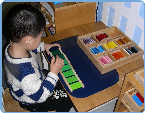
Sensorial Activities provide an opportunity for the child to explore the relationships of color, sound, shape, form and texture. The child learns to compare, contrast, reason, classify and categorize physical properties in his/her world. This trains the senses and provides the necessary foundation for both physical and mental activities in learning.
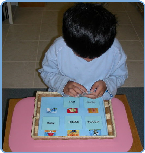
Language Activities provide rich opportunities for the child to develop his/her vision, hearing, speech and fine-motor skills. Through the materials the child becomes familiar with sounds and symbols and begins to make the transition to putting sounds together to make his/her own words. Sandpaper letters, metal insets for shape tracing and moveable alphabet letters all aid the child in developing the muscular control needed to write. The language program is seen as a preparation for more formal learning at the elementary level.
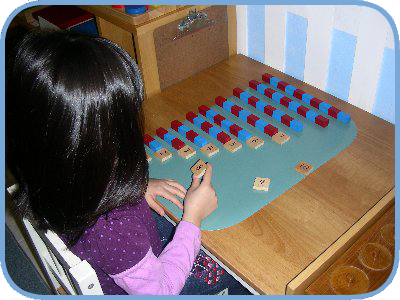
Mathematics introduces concepts of math by manipulating concrete materials. The child learns how to develop quantity through the use of tangible objects that represent abstract ideas. The goals of the program are the development of problem-solving strategies, computational skills, and confidence in using numbers in everyday life.
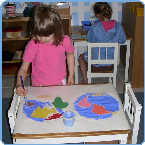
Cultural Activities include art, music, science, history and geography and are interwoven throughout the activities of the program and are not taught as separate subjects. The classroom environment is prepared to meet the child’s curiosity about the world. Care and observation of living plants and animals develop their relationship with other living things. Maps, timelines, and other materials introduce simple concepts and foster vocabulary and understanding.
Social Activities teach the children how to relate to others in their environment. From an early age the child develops skills necessary to balance between his/her individual freedoms and the rights and responsibilities towards others and the group. Cooperation is learned and the child is always encouraged to be considerate and helpful to others. Older children learn to be responsive to the needs of younger children and often aid them in learning new tasks of adopting positive behaviour. Grace and courtesy is emphasized when relating to other children and adults.









